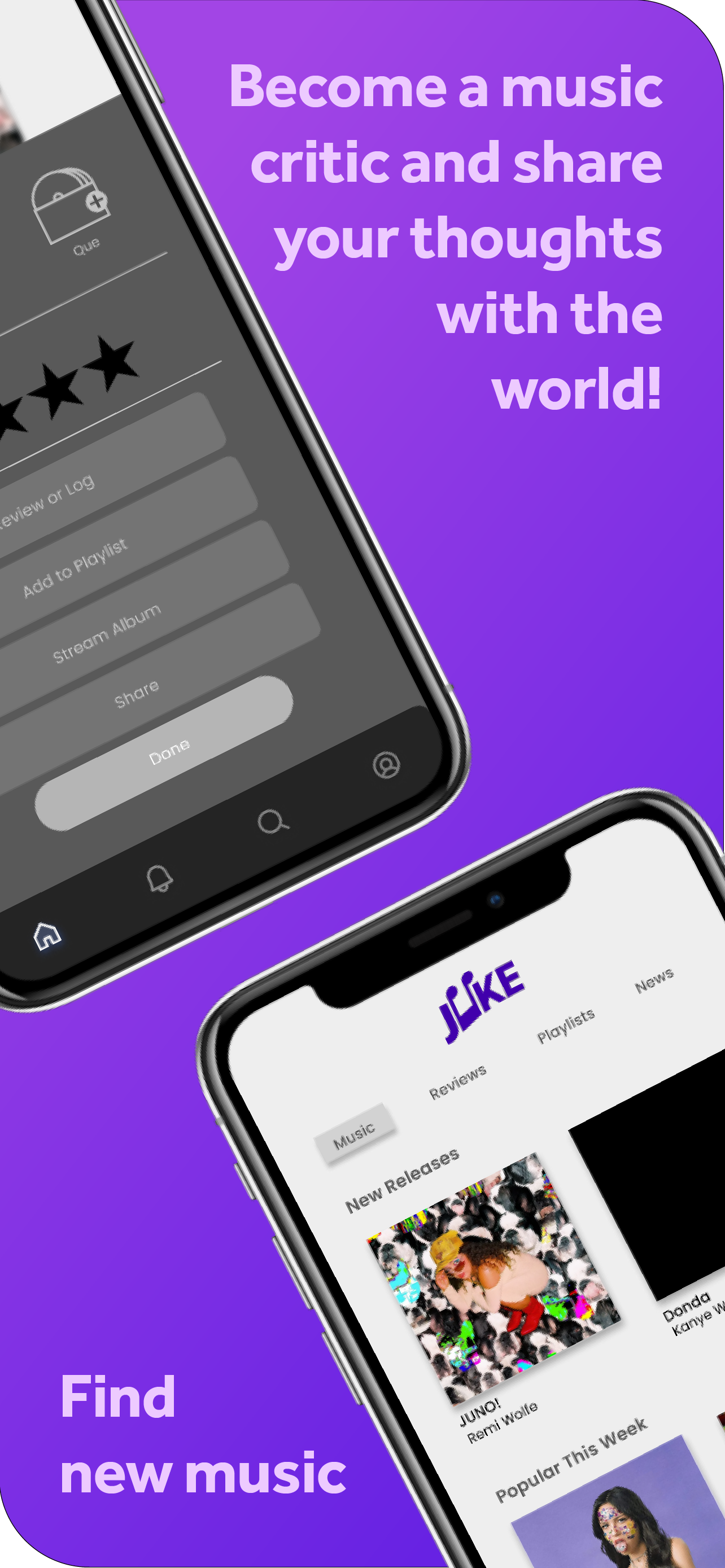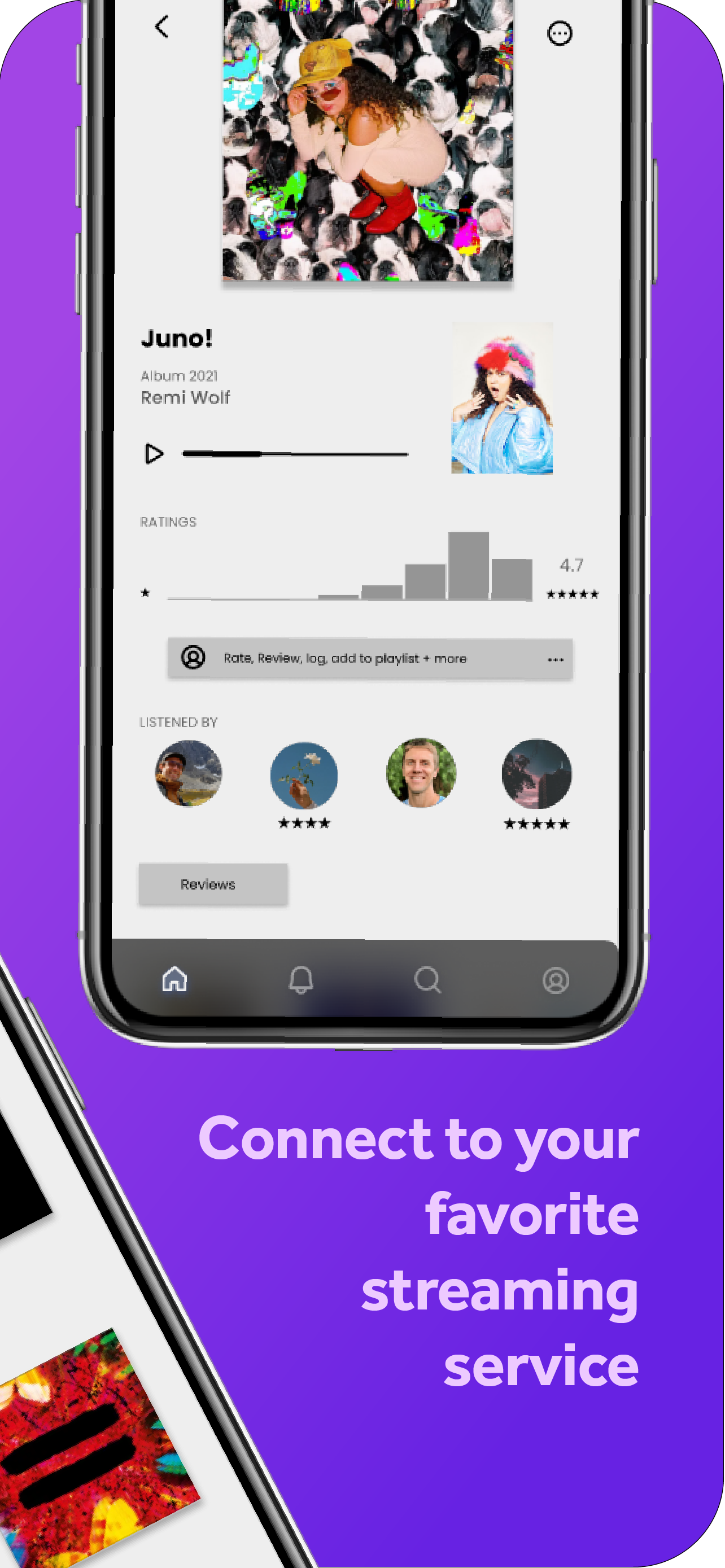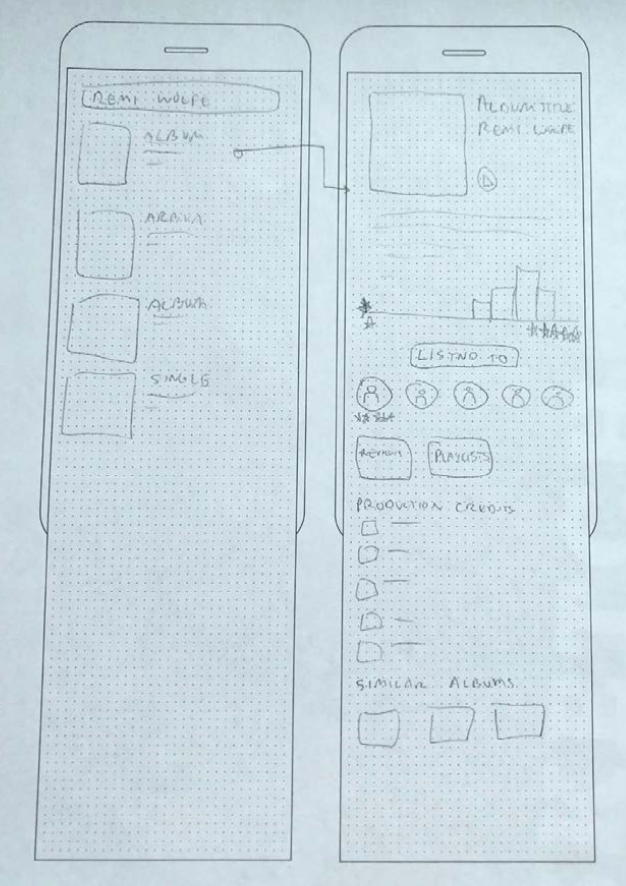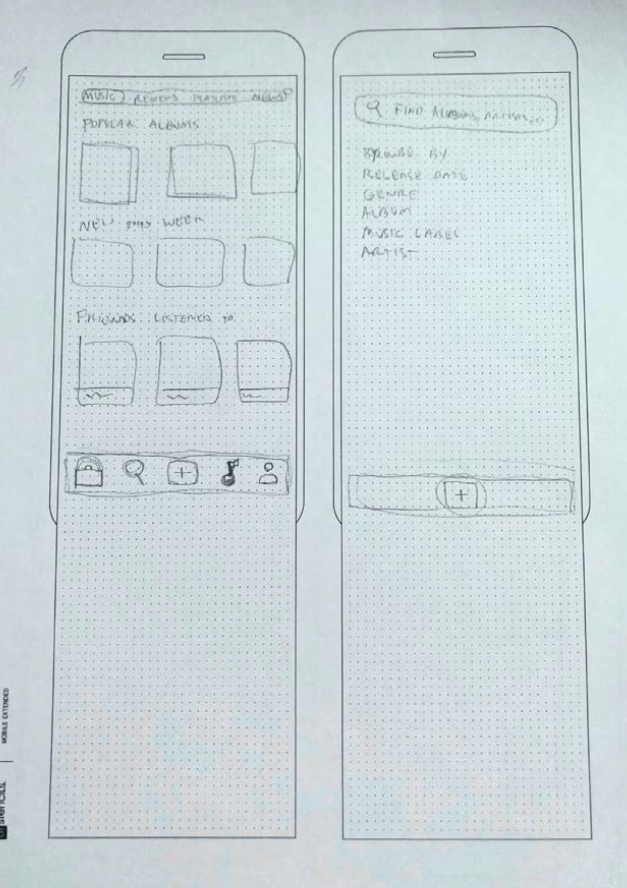App Icon



Principles:
- Conversational
- Straightforward
- Focus the User on one primary action at a time
- Express related Elements in a similar manner
- Conversational
- Straightforward
- Focus the User on one primary action at a time
- Express related Elements in a similar manner
The User: Juke's target demographic is widespread, as music is universal and the act of engaging with music benefits greatly from as large a range of perspectives as possible. Essentially, the target user of Juke is those who enjoy engaging with music in a more meaningful way, i.e., cataloging, reviewing, and sharing. Data shows 62% of testers considered themselves a music enthusiast. Of that same group polled, 44% said that they would use an app like Juke often. Research supports that even within a small test group, there is a desire for individuals to engage deeper with their music.
Maze Survey Link: https://t.maze.co/56969259
Problems: In the music world, countless streaming services exist for users to listen to music, and most attempt to incorporate some form of social media engagement within their respective mobile apps. However, there is no streamlined experience for users to share, review, rate, and catalog their music in a way that is engaging socially.
Customer Journey
Ideation: The primary features of Juke are to log music listening history, create playlist catalogs, write and share reviews for albums or singles, give music a rating out of 5 stars, and que music for listening to later.
Since the replacement of vinyl records and CDs with digital music streaming, the ability to collect and catalogue music has been sidelined. This is a meaningful part of the music experience and sharing listening history with others on Juke, allows users to partake in that once again. Users have the option to manually input their listening history or connect to their streaming platform of choice to automatically sync their Juke account.
Another integral part of the music experience is making playlists. Since most streaming apps utilize this function, Juke has no reason not to include it, as well as offering the same syncing option for a user’s preferred platform.
With the advent of social media platforms like Twitter, the urge to share your opinion with the world has never been greater. With Juke, everyone can be a music critic by sharing a written review either publicly, or with their approved followers. This keeps the discourse around music in a music-centered space, rather than outsourcing to other mixed media apps.
Since the replacement of vinyl records and CDs with digital music streaming, the ability to collect and catalogue music has been sidelined. This is a meaningful part of the music experience and sharing listening history with others on Juke, allows users to partake in that once again. Users have the option to manually input their listening history or connect to their streaming platform of choice to automatically sync their Juke account.
Another integral part of the music experience is making playlists. Since most streaming apps utilize this function, Juke has no reason not to include it, as well as offering the same syncing option for a user’s preferred platform.
With the advent of social media platforms like Twitter, the urge to share your opinion with the world has never been greater. With Juke, everyone can be a music critic by sharing a written review either publicly, or with their approved followers. This keeps the discourse around music in a music-centered space, rather than outsourcing to other mixed media apps.
Low Fidelity Hand Sketches


Low Fidelity Wireframes
User flow testing link: https://t.maze.co/59918407
Greatest Success: I believe the best functional success of Juke is the fact that it is designed to be integrated with the streaming platform of the user’s choice. If a user has the desire to input their history, playlists, or que manually, they can. However, if they wish to sync their streaming app and their Juke account, they will access a seamless experience of music cataloguing.
One of the biggest downfalls with the music streaming industry, is that in order to share your playlists or listening history with friends, you have to be using the same service. With Juke, Spotify listeners can share their history with Apple Music users, and a playlist made on Amazon Prime music can now be saved on Juke and downloaded on Tidal.
Juke brings together music enthusiasts from across Youtube, Spotify, Apple Music, Twitter, and Instagram and creates a unified experience in one place for all users.
One of the biggest downfalls with the music streaming industry, is that in order to share your playlists or listening history with friends, you have to be using the same service. With Juke, Spotify listeners can share their history with Apple Music users, and a playlist made on Amazon Prime music can now be saved on Juke and downloaded on Tidal.
Juke brings together music enthusiasts from across Youtube, Spotify, Apple Music, Twitter, and Instagram and creates a unified experience in one place for all users.
High Fidelity Design
Figma Prototype:
https://www.figma.com/proto/NAxVWUL5oTqffnkebidMKN/JUKE
https://www.figma.com/proto/NAxVWUL5oTqffnkebidMKN/JUKE
Results: User prototype testing found that 100% of users had direct success completing the user flow and 94% found the task easy. The average duration it took users was 3.4 seconds, meaning my design is simple enough for someone to quickly pull their phone out, rate the album they have just listened to, and continue with their day.
Animated Web Banners.
